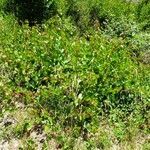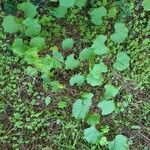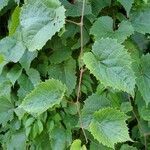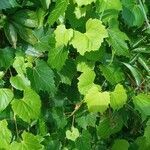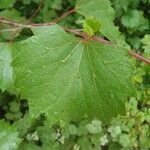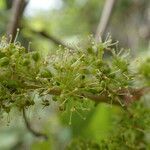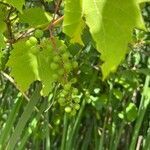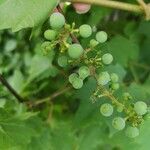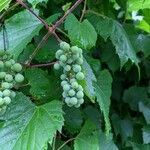High-climbing vine, the pith interrupted by diaphragms 0.5–1 (or at maturity 2) mm thick; lvs rotund, 1–2 dm, usually 3-lobed (the lobes mostly pointing forward), coarsely and sharply serrate (the teeth commonly longer than wide, with one or both sides concave), pubescent beneath when young, permanently so in the vein-axils and sometimes along the veins; panicles 5–10 cm; fr black, heavily glaucous, 6–12 mm; 2n=38. Moist woods, roadsides, and thickets; N.B. and Que. to Mont., s. to Va., Tenn., Ark., and Tex. (V. vulpina, misapplied) Perhaps properly to be submerged in V. vulpina.
A climbing or scrambling plant. It grows 12 m high and spreads 3-6 m wide. The leaves usually have 3 lobes. They are shiny green and have teeth along the edge. The flowers have a sweet scent. The fruit are purple-black and round. They are tart but edible. There are sweet varieties.
